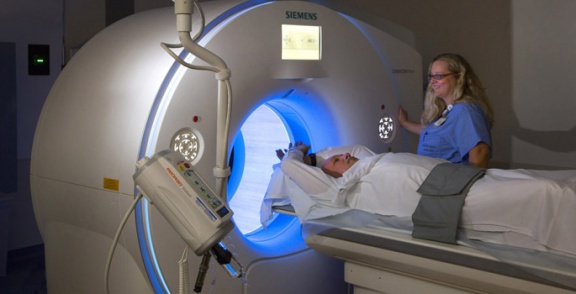The following story originally appeared in the March 9, 2017, edition of the VUMC Reporter.
Patients scheduled to undergo an imaging procedure at Vanderbilt University Medical Center (VUMC) can now explore a new Radiology and Radiological Sciences patient website for tips about what to expect during the visit, how to prepare for the procedure and how early to arrive prior to the appointment.
Designed with patient education in mind, the website on the Vanderbilt Health platform contains information on the wide range of imaging services offered at VUMC.
“Building and deploying the Radiology patient-facing website is a huge step forward toward improving the patient experience,” said Rich Pierce, MBA, chief of Finance and Administration, Department of Radiology and Radiological Sciences. “By helping patients better understand the steps ahead of them we will improve their experience by lowering their anxiety, helping them better prepare for their exam and building expectations that we will match with our performance.”
Most patient visits to VUMC are scheduled through the offices of referring physicians or other clinicians and sometimes there is no direct patient contact with Radiology until the patient arrives. This gap in communication can lead to confusion or disappointment if a procedure has to be cancelled and rescheduled because the patient didn’t know what to expect in advance.
Sarah Moore, MBA, CNMT, RT(CT), director of Radiology and Radiological Sciences, said department leaders solicited feedback from patients while designing the website.
“We really heard from our patients, particularly through our Patient Advisory Council, that they didn’t know what they were going to encounter when they arrived. They said, ‘If I’ve never had to use Radiology services in the past, I believe I’m going to come in, take a picture and walk out the door.’”
But with nearly 1,000 types of imaging procedures provided at VUMC there is great variability in the length of time needed to perform a procedure. Patients also need to know how to prepare.
For some procedures a patient might need to abstain from eating or drinking for several hours or, conversely, might need to drink several glasses of water in the hours prior to the procedure.
“We have patients who are driving for two or three hours and when they arrive at VUMC, we sometimes discover they didn’t receive or remember the prep instructions from when they made the appointment in their referring provider’s office,” Moore said. “So we have a team that attempts to reach out to patients undergoing complex exams by telephone in advance. But sometimes we can’t reach the patient despite multiple phone calls.
“This website is another resource that will help them plan for their visit.”
On the website patients can review the types of imaging procedures available such as MRI, ultrasound, CT scans, fluoroscopic exams, PET scans, nuclear medicine, interventional procedures or PICC lines. In each section, patients can find out how to prepare, what to expect, how early to arrive and how long the procedure is likely to last.
Readers can click on additional links to find more in-depth information about each type of technology.
“We felt it was important to let patients and families see what the equipment looks like, and see some of our friendly staff members who will be here to guide them through their journey in Radiology. We hope this additional information will help dispel anxiety and communicate to patients how much we value and appreciate being their choice for imaging services,” Moore said.


